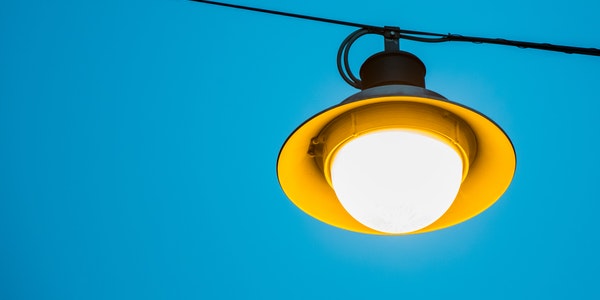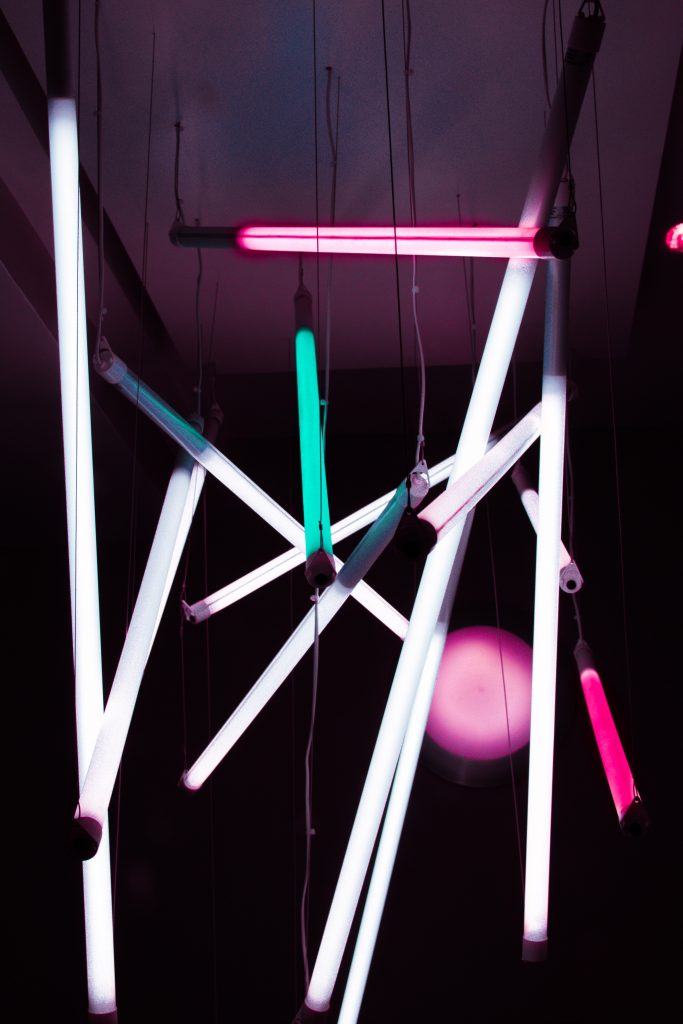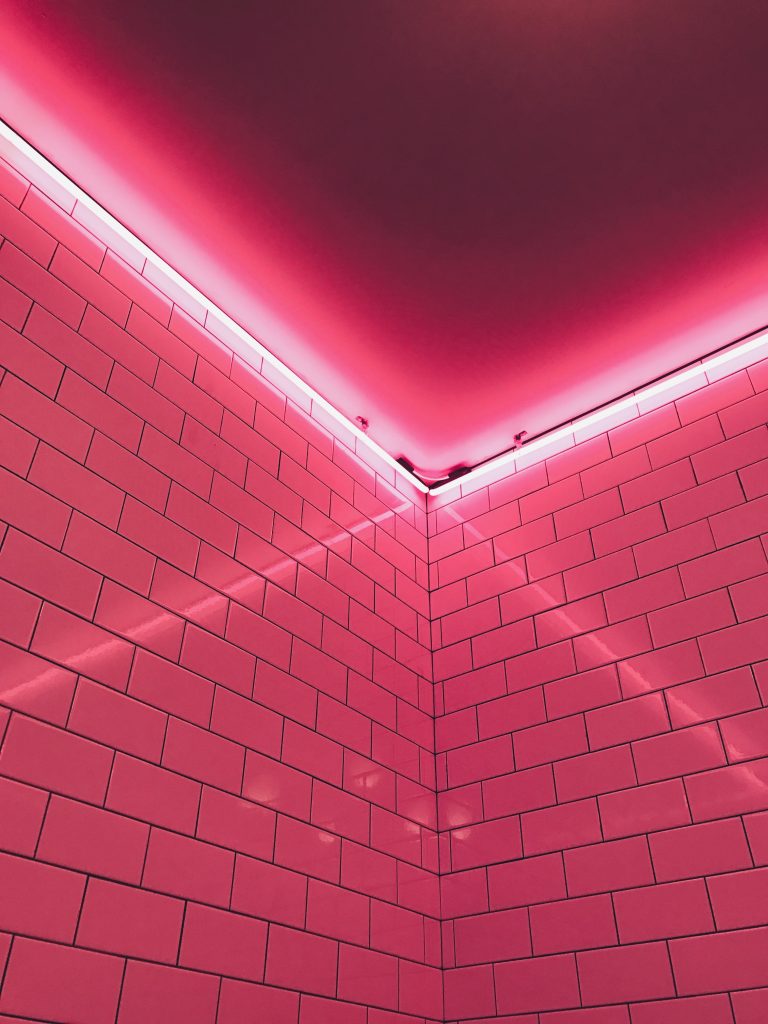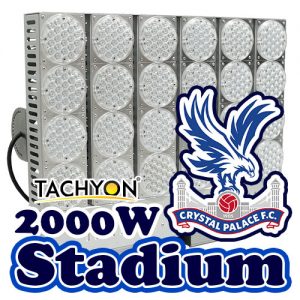What is a tri-color tube?
The three-primary color tube means that the fluorescent powder in the tube as the luminous substance is a combination of three kinds of phosphors that can emit red, green and yellow light, which emits white light, and the light it emits is similar to the color of daylight; its manufacturing The cost is higher than that of ordinary fluorescent lamps, and it is more visually “comfortable” than ordinary fluorescent lamps.
Three primary color phosphors have great advantages over traditional halogen powders:
- It has good color rendering, low light decay and high light efficiency. Disadvantages: Because of its luminous characteristics, it still uses alternating current to work, which also shows that the three-primary color lamp has serious radiation and stroboscopic, and it is not suitable for close-range table lamp lighting. When using three-primary color phosphors, in order to reduce the expensive three-primary color phosphors, the economic effect is very obvious.
- Reduce packaging and storage and transportation costs,
- Energy saving. Because the luminous efficiency of the lamp tube is related to the tube diameter, the luminous efficiency will decrease if the tube diameter is too thick and too thin, and the luminous efficiency is the largest under a certain diameter tube.
Why is there an optimal tube diameter for luminous efficiency? The analysis is as follows:
If the tube diameter is too thick, the ultraviolet light emitted by the excited atoms of mercury in the tube will be absorbed by the gas in the tube itself, so less ultraviolet light reaches the phosphor on the tube wall, so the visible light emitted is also reduced. . If the tube diameter is too small, the charged particles (electrons and positive ions) in the tube can easily run to the tube wall to recombine (neutralize) them into neutral atoms, so the loss of charged particles will increase. In order to maintain the conductive state of the tube, More electrons and positive ions need to be generated, so the tube pressure will increase, so the electric power of the lamp tube will increase, that is, the light efficiency of the lamp tube will decrease. According to literature, experimental results and theoretical calculations show that the best pipe diameter (inner diameter) is approximately in the range of 18-22mm, which is roughly in the range of T5-T8.
What is the difference between three primary color energy-saving lamps and ordinary energy-saving lamps
Tri-color fluorescent lamps seem to be very hot in the market. People are now very concerned about energy conservation and environmental protection in lamps and lanterns. However, there are still many people who are not particularly clear about tri-color fluorescent lamps, so they are particularly hesitant to choose when buying. Are tri-color fluorescent lamps energy-saving lamps? What are the differences between tri-color energy-saving lamps and ordinary energy-saving lamps?
Are tri-color fluorescent lamps energy-saving lamps?
There are also energy-saving lamps with three-primary-color fluorescent lamps. The three-primary-color fluorescent lamps improve the efficiency of the lamp through green light, plus blue and red light, and properly balance the three colors, so as to successfully obtain high light efficiency and high light efficiency. A new type of fluorescent lamp with color rendering performance.
Further changing the mixing ratio of these three kinds of lights, resulting in a three-primary fluorescent lamp (2700~3000K) with a warm light effect similar to a bulb; a three-primary fluorescent lamp (4000~5000K) with a neutral white light that is full of spring; Refreshing and bright daylight color three-primary fluorescent lamp (6200 ~ 6700K).
The advantages of three-color energy-saving fluorescent lamps are: small size, soft light color, good color rendering, unique shape; luminous efficiency is about 30% higher than ordinary energy-saving lamps, 5-7 times higher than incandescent lamps, that is, a 7-watt lamp The luminous flux emitted by the tri-color fluorescent lamp is the same as the luminous flux emitted by an ordinary 40-watt incandescent lamp.
The difference between three primary color energy-saving lamps and ordinary energy-saving lamps
The main difference between tri-color energy-saving lamps and ordinary energy-saving lamps is the phosphor. Tri-color fluorescent lamps use rare earth phosphors with higher luminous efficiency.
The phenomenon of material luminescence can be roughly divided into two categories: one is when the material is heated to produce thermal radiation and emit light, and the other is when the object is excited to absorb energy and transitions to an excited state (unstable state) in the process of returning to the ground state. Energy is emitted in the form of light. Most of the luminescent materials that use rare earth compounds as a matrix and rare earth elements as activators belong to the latter category, namely, rare earth phosphors. Rare earth element atoms have abundant electronic energy levels. Because the 4f orbital exists in the electronic configuration of rare earth element atoms, it creates conditions for multiple energy level transitions and obtains a variety of luminescence properties.
The tri-primary energy-saving lamp is a typical hot cathode fluorescent lamp. It is an energy-saving lamp made by coating the inner wall of the glass tube with tri-primary phosphors (mixed with red, green and blue rare earth phosphors in a certain proportion). The phosphor emits light under the excitation of ultraviolet rays. Its luminous efficiency is more than twice higher than that of incandescent lamps. Generally, the luminous flux is above 55lm/W, especially its color rendering is greater than Ra78. The luminous flux maintenance rate in 100 hours is above 90%, and the luminous flux maintenance rate in 2000 hours is about 80%. The attention of the world.
When the lamp is energized, it discharges between the tungsten wire electrodes encapsulated at both ends of the lamp and emits ultraviolet rays. The phosphor converts short-wave radiation (ultraviolet rays) into visible light and emits light. Rare earth trichromatic fluorescent lamp, which contains rare earth phosphors of yttrium, europium and terbium, can emit brighter light, which is closer to the solar spectrum than ordinary fluorescent lamps, and can save 50% of energy consumption compared with ordinary fluorescent lamps to achieve the same illumination. The powder is a mixture of three types of phosphors that emit narrow-band red (611nm), green (545nm) and blue (450nm) spectra.
The advantages and disadvantages of incandescent lamps, halogen lamps, fluorescent lamps, energy-saving lamps and LED lamps
Incandescent
- Working principle: Incandescent lamp is also called tungsten lamp. The filament temperature of a lit incandescent lamp is as high as 2000 ℃ or more. It is because the hot filament produces light radiation that the electric lamp emits a bright light. Incandescent lamp is a source of heat radiation.
- Advantages: incandescent lamp is closest to sunlight, cheap, good color rendering index 99-100; color rendering index is an indicator of color authenticity, generally the higher the color rendering index, it means that it is in this category The color of the object under the light is closer to the real color.
- Disadvantages: only about 2% to 4% of the electric energy consumed by the incandescent lamp can be converted into light energy, and the rest is lost in the form of heat energy, the energy conversion efficiency is very low, and the service life usually does not exceed 1000 hours . In other words, it is neither energy-saving and short-lived.
Although incandescent lamps are cheap and have good color rendering, they consume a lot of power and have a short lifespan. Most of the electric energy is used for heating, and their performance is far lower than that of the new generation of new light sources. They have been asked to gradually withdraw from the market.
Halogen lamp
The spotlights commonly used in most homes use this kind of lamp cup.
- Working principle: A variant of the incandescent lamp. The principle is to inject halogen gas such as iodine or bromine into the bulb. Under high temperature, the sublimated tungsten wire reacts with the halogen chemically, and the cooled tungsten will re-solidify on the tungsten wire. Form a balanced cycle to avoid premature breakage of the tungsten wire. Therefore, halogen bulbs have a longer life span than incandescent bulbs.
- Advantages: It is also relatively close to the continuous spectrum of sunlight, with good color rendering, with a color rendering index above 95; the price is also relatively cheap. Small size and good light control, so it is suitable for projective lighting occasions. And more use dimming equipment to adjust the brightness.
- Disadvantages: The essence of the incandescent lamp is not changed, but it still emits heat, and most of it is lost in heat, and the light conversion efficiency is not high. The life span is increased to 2000-4000 hours.
It is cheap and good in color rendering, small in size and light control. It is suitable for use in places where projected lighting is required and the color reproduction of the object is relatively high.
Fluorescent lamp (also called tube light)
- Working principle: Fluorescent lamps are also called fluorescent lamps. It is a kind of lamp tube with external ballast and starter. The fluorescent tube is simply a closed gas discharge tube. The tube of the fluorescent lamp is filled with argon gas and a small amount of mercury, and the inner wall of the tube is coated with fluorescent powder. Fluorescent lamps emit ultraviolet light in the process of gas discharge, and about 60% of the energy consumed can be converted into ultraviolet light. Phosphors absorb ultraviolet light and release visible light, while other energy is converted into heat.
- Advantages: Generally, the efficiency of converting ultraviolet light into visible light is about 40%. Therefore, the efficiency of a fluorescent lamp is about 60%×40%=24%-approximately twice that of a tungsten lamp with the same power.
- Disadvantages: the color rendering is relatively poor, especially the early non-tribasic toner fluorescent lamps. Fluorescent lamps contain harmful elements such as mercury, which are harmful to the environment. In addition, ultraviolet radiation and stroboscopic phenomena can also cause damage to human eyes.
China is currently the country with the highest degree of popularization of fluorescent lamps in the world. With people’s increasing concern about health and environmental protection, fluorescent lamps are gradually withdrawing from the stage of history.
Energy-saving lamps
- Working principle: Energy-saving lamp is a compact fluorescent lamp with its own ballast.
- Advantages: small size, energy saving than incandescent lamps, and longer life than incandescent lamps. In addition to the white (cold light) energy-saving lamps, there are now warm light. Generally speaking, under the same wattage, an energy-saving lamp is 80% energy-saving than an incandescent lamp, its average life span is 8 times longer, and its heat radiation is only 20%.
- Disadvantages: The color rendering index is low, which will cause serious discoloration when looking at things; fragile products, mercury is added to it, and there is no good recycling mechanism, and the environmental pollution caused by it cannot be ignored; the ballast used in energy-saving lamps is produced at the moment At high voltage, a certain amount of electromagnetic radiation will be generated.
Energy-saving lamps bring a lot of convenience to our lives, but it also brings a lot of problems: mercury pollution, stroboscopic and electromagnetic radiation.
LED light
- Working principle: LED is a light-emitting diode, which is a solid-state semiconductor device that can convert electrical energy into visible light. It can directly convert electricity into light.
- Advantages: The luminous efficiency is higher than that of incandescent lamps and fluorescent lamps. Theoretically, it has a long life span and can emit up to 100,000 hours. The actual product is basically 30,000-50000 hours. It is not a problem; no ultraviolet and infrared radiation; no lead, mercury, etc. Pollution element.
- Disadvantages: There are many ways to realize white light LED. The most common and mature one is to apply a layer of yellow phosphor on the blue chip to mix blue and yellow light into white light, so the material of phosphor is opposite to white light. The attenuation of LED has a great influence. At present, the problem of LED light decay still exists.
LED has the advantages of energy saving and environmental protection, and it will inevitably become the mainstream lighting source in the future.
In my work, I used a 5-watt LED tube to replace a 40-watt fluorescent lamp. The circuit of the lamp holder can be slightly changed. There is no change in brightness, which is indeed very energy-saving. I also replaced the 35-watt halogen lamp cup with a 5 watt LED lamp cup. Although it saves power, there are other problems. The LED’s light-gathering performance is too good. After the replacement, the ground is a spot, but the halogen lamp cup generates heat. High, high power consumption, but uniform light.










